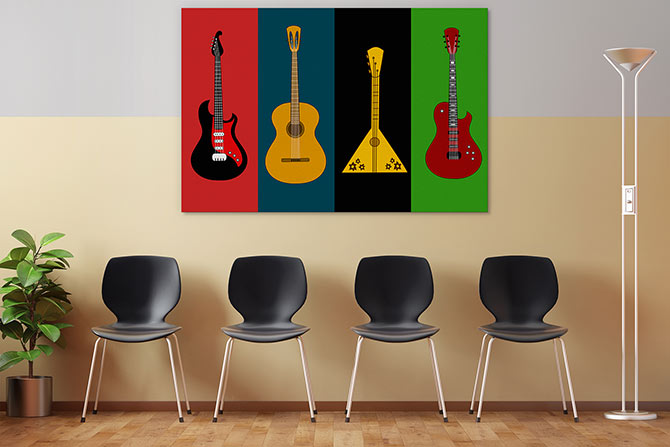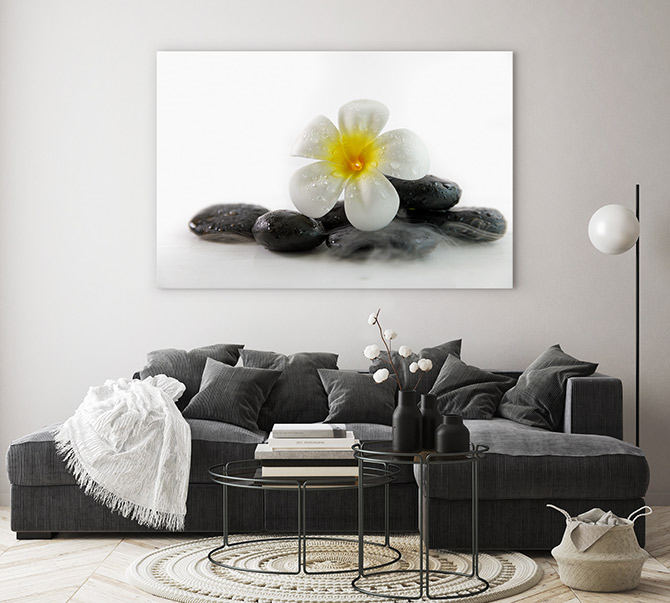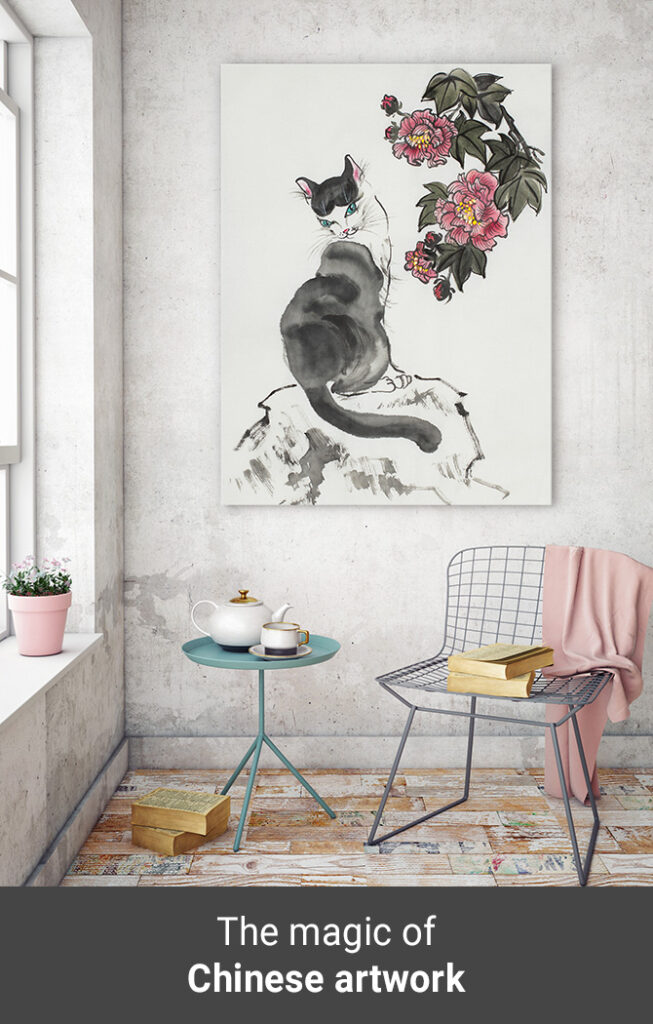
Dating back to more than 4000 BC, traditional Chinese artwork is one of the oldest styles of art to ever exist.
Whilst it changes slightly depending on the era, Chinese art typically features strong symbolism woven into the rich history of the nation. This versatile and intriguing style of art makes for an attractive – and even philosophical – addition to a space.
Landscapes
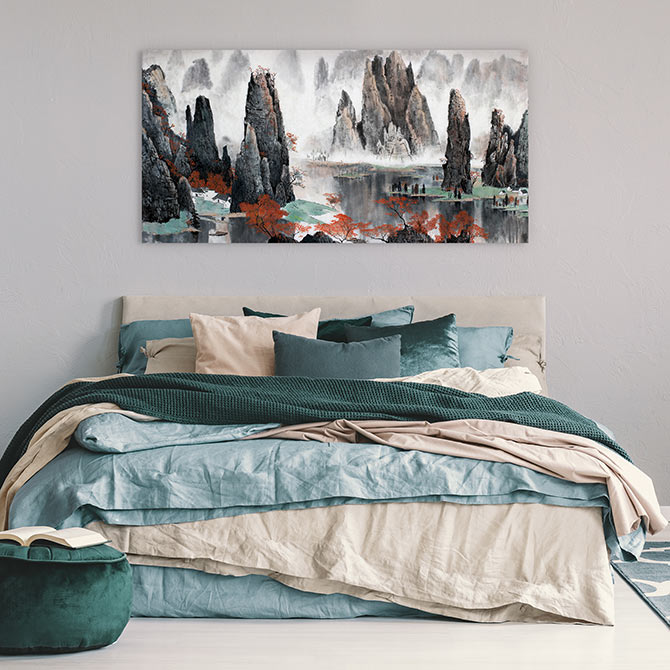
In traditional Chinese culture, nature was seen as a manifestation of a higher power. So to paint landscapes and other facets of nature was to recognise and respect the power from outside humans.
In particular, mountains are depicted in classic Chinese artwork because they represent spirituality; reaching to the heavens and the home of the immortals.
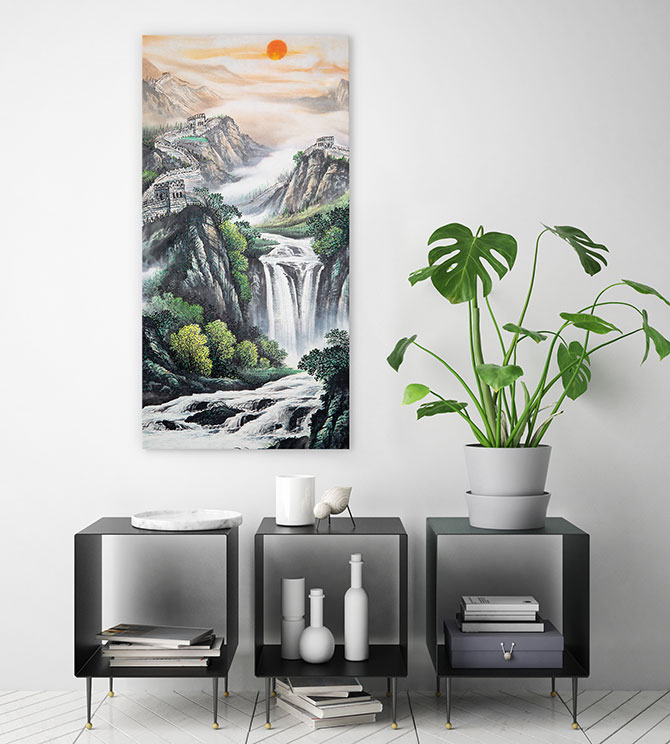
Landscapes in this style were typically monochromatic to evoke more atmosphere and used a similar technique to that of calligraphy. Often, they were created with a brush dipped in black ink and painted onto paper or silk and affixed to scrolls.
Interestingly, landscape paintings were often based on how the environment was perceived by the artist, not an exact replica of what they saw.
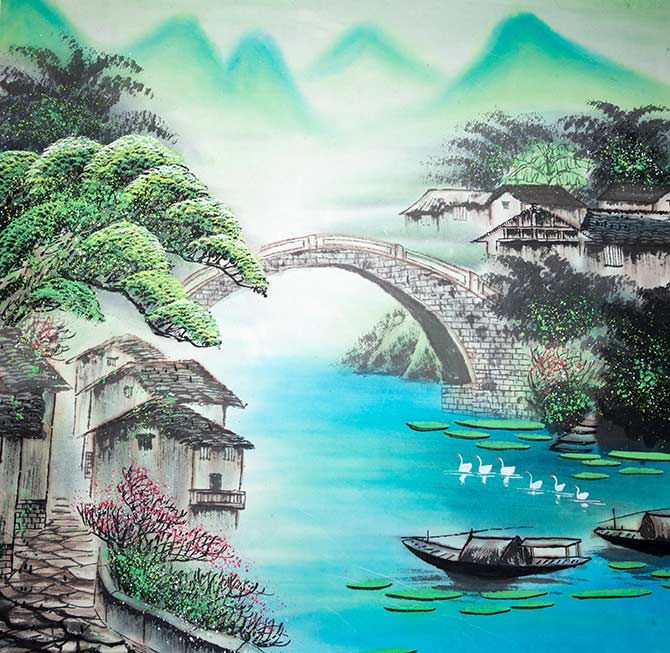
Typically, this style of art comprised of a set of mystical elements including straight pathways (could be substituted by a river), a threshold and the heart— or a single focal point of the painting. Just like the bridge in the example above.
Symbolism
Chinese artwork is rich with – and renowned for – symbolism. There are many primary objects that feature heavily, particularly animals.
Dragons
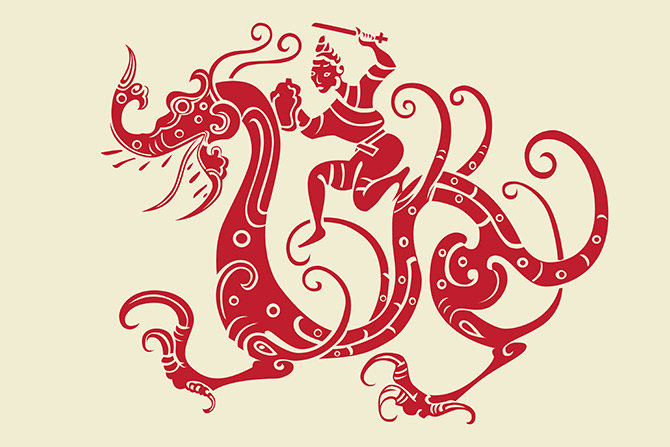
Dragons symbolise the height of power and are considered to be lucky and protective. Chinese dragons are one of the most potent symbols in traditional folklore, bringing wealth, luck and success. They are revered and not feared, which is why so many people choose to hang dragon art on their walls.
Tigers
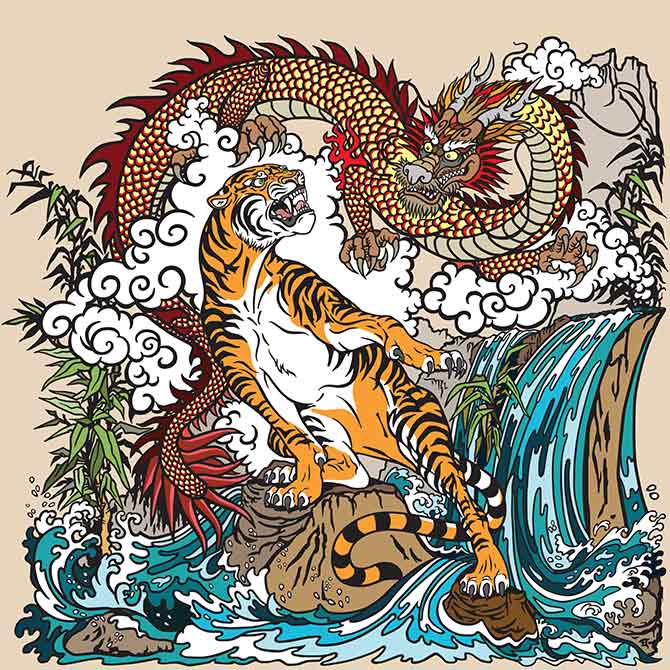
As you would expect, a Chinese tiger depicts ferocity and courage. A well respected animal, it is even seen as a God of sorts, proclaiming extreme luck and regalness.
Intriguingly, it is believed the tiger bears the Chinese character ‘wang’ on its forehead, meaning ‘the king’.
Koi Fish
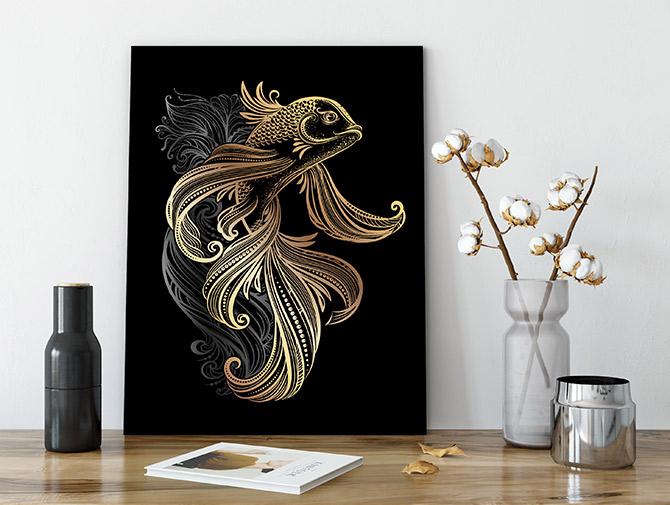
Koi fish are not only beautiful but symbolise good fortune, success and prosperity, which explains why they are so frequently depicted in Chinese artwork.
In the ‘…Chinese legend of the Dragon Gate, a koi fish swam upstream, through waterfalls and other obstacles to reach the top of the mountain. The legend says that when the koi finally reached the top, it became a dragon, one of the most auspicious creatures in Chinese culture.’
Techniques
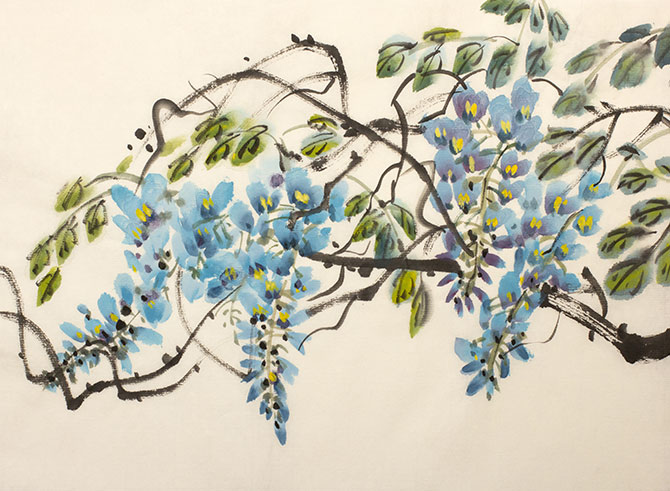
Often, Chinese art was created by scholars and amateurs as opposed to professional artists, as it was a way of studying and embodying philosophical learnings.
The three perfections
Ancient Chinese artwork was formed around what is known as the three perfections: calligraphy, painting and poetry. Artists would typically bring together these forms in the same artwork, such that painting was poetry and poetry was painting. This type of self expression was extremely noble and every brushstroke was considered to be a silent communication from within. Even today, you can see the poetry that Chinese artwork contains!
Ink wash
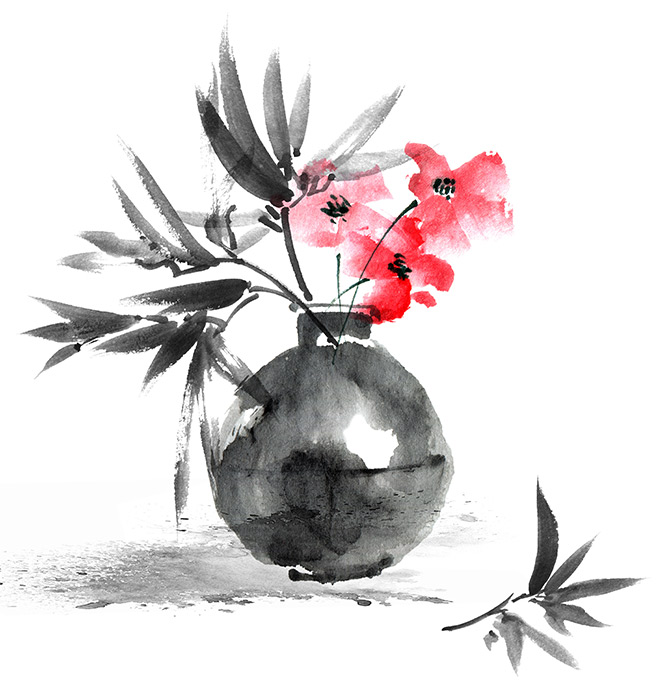
One of the most fundamental techniques used to create Chinese art is that of ink wash, said to contain a certain essence of the painting’s subject. Chosen for its interpretative and philosophical style, this form of watercolour painting encouraged artists to capture the very spirit of the subject. This often resulted in asymmetric paintings featuring just a portion of the entire object, creating striking and thought provoking pieces.
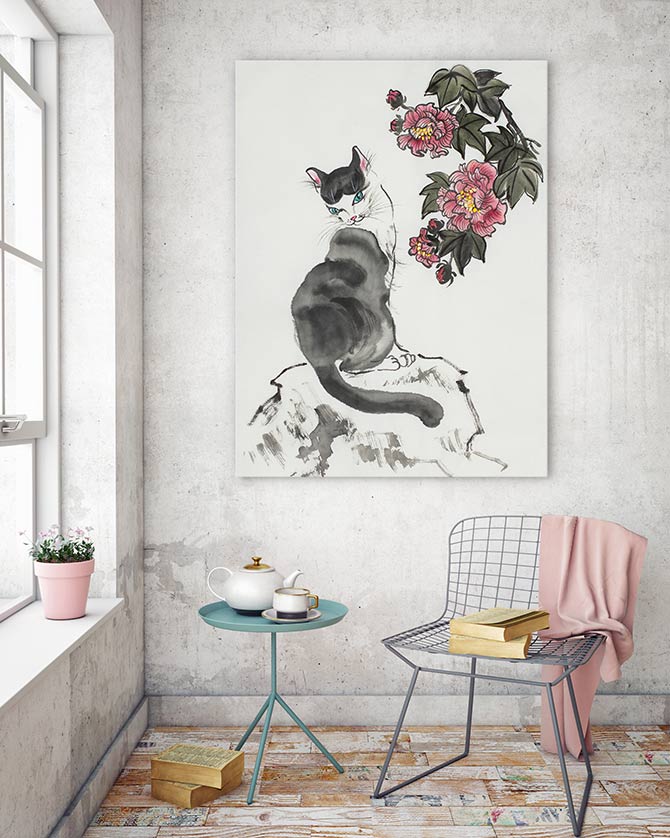
Traditionally, artists used long haired brushes made from animal fur or hair and black ink and painted long strokes onto silk or paper.
Colours
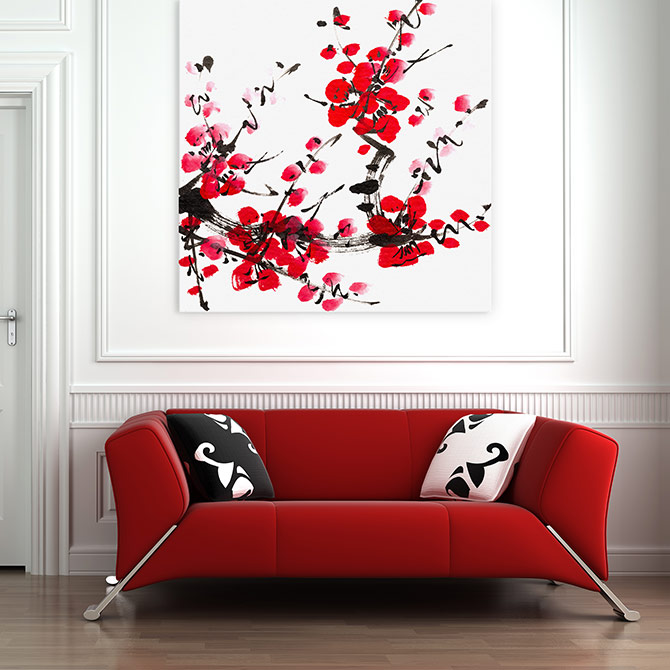
Colours are an important aspect of Chinese art, with red, black, white, yellow and “grue” (a combination of green and blue, called qing in Chinese) featuring heavily.
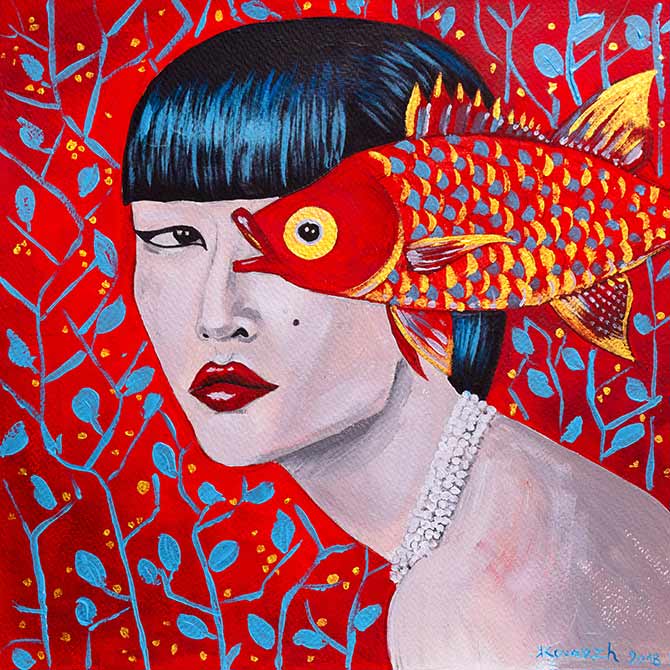
Each colour is representative of one of the five elements; important fundamentals in the Feng Shui philosophy. For example:
- Black = water and represents Heaven
- Red = fire and represents good fortune and joy
- Grue = wood and represents fertility and abundance
- White = metal and represents death and mourning
- Yellow = earth and represents royalty and imperial officials
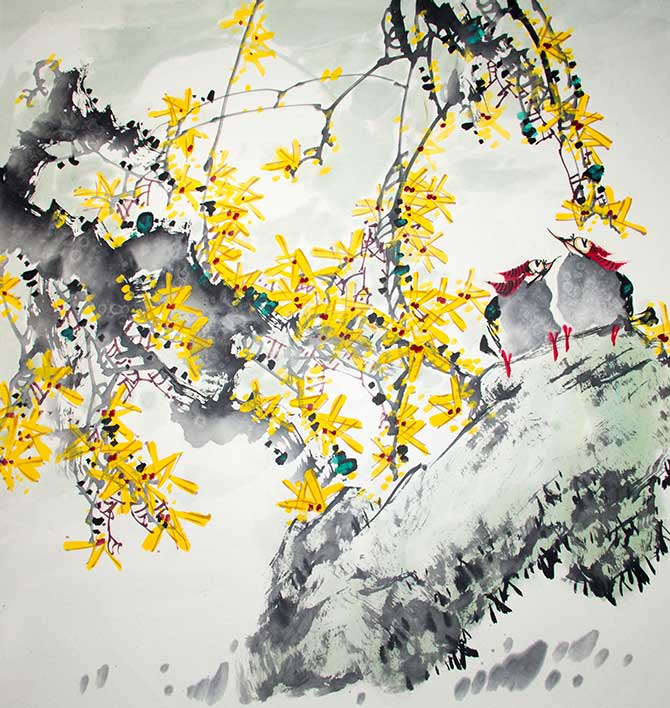
Feng Shui
The ancient art of Feng Shui is an important part of cultural mysticism; both historically and today. A major focus of the philosophy is interior design and furniture placement, so artwork can play a fundamental and influential role in achieving the harmony we seek.
The life force of plants
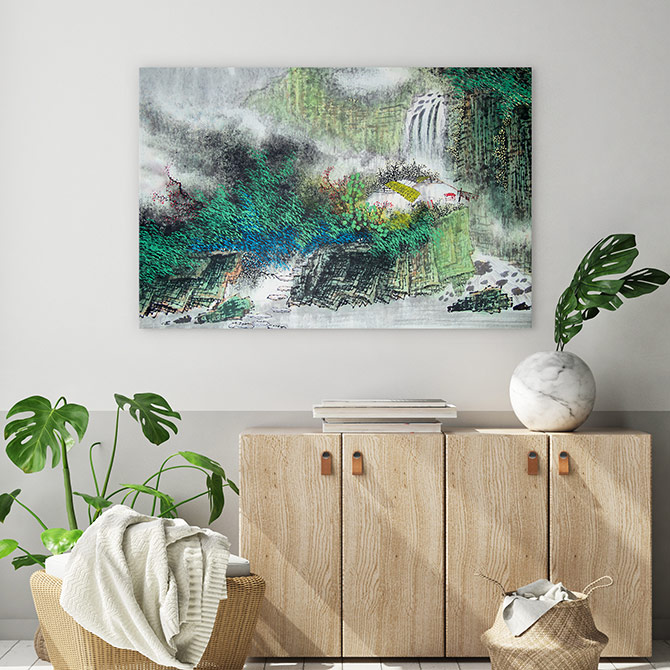
Wind and wood are very fortuitous when it comes to Feng Shui, so choose artwork that features these elements. Enhance the look with some fresh potted plants – anything that connects you with nature is going to boost feelings of well-being and positivity.
Balance and harmony
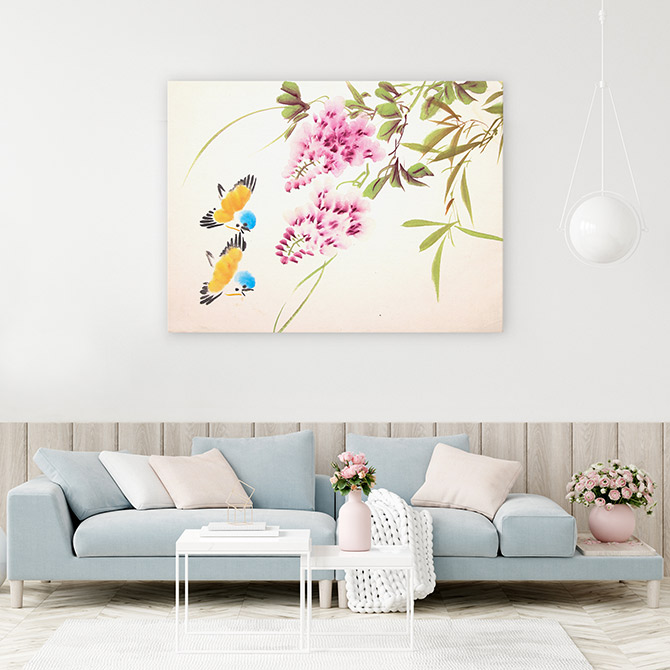
Mysticism aside, selecting the perfect blend of textures and colours can create balance and harmony in a space. Consider using a good mix of materials to avoid a single overpowering item, including a variety of textures and finishes. For example, soften a space with comfy pillows and throws and choose homewares with complementary colours.
Symbolism and fortune
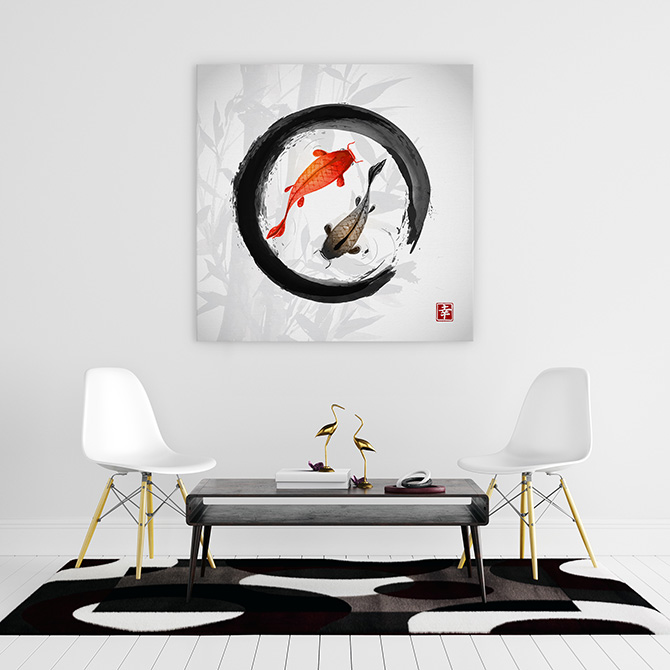
Traditional Chinese beliefs favour symbols and it’s in Feng Shui principles that we most see this reverence. For example, koi fish are said to be representative of the yin yang symbol for ultimate balance and genuine completeness. Even just hanging a print depicting koi in your home can enhance its auspicious energy.
The key to making symbolism work as part of your Feng Shui strategy is to ensure the symbols resonate with you personally. Find a subject that holds both profound meaning and visual appeal.


